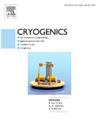Dynamic simulation of safety relief process under vacuum failure scenarios in large cryogenic system
IF 2.1
3区 工程技术
Q3 PHYSICS, APPLIED
引用次数: 0
Abstract
Large cryogenic systems are vital for large scale scientific and industrial facilities such as superconducting accelerators, fusion reactors and superconducting magnet systems. These systems operate at liquid helium or superfluid helium temperatures and contain large helium inventories, making them highly vulnerable to overpressure hazards during vacuum failure scenarios such as loss of insulation vacuum (LIV) and beam vacuum (LBV). An appropriately designed safety relief system is crucial for risk mitigation. Conventional safety device sizing approaches typically rely on conservative steady-state assumptions and overlook the dynamic nature of discharge processes, potentially leading to inappropriate valve selection and suboptimal system process design. To address this, a comprehensive dynamic simulation model of cryogenic safety relief processes was developed using EcosimPro software. The model includes detailed heat and mass transfer modelling of vacuum failure behaviour, cryogenic components modelling, and safety relief process modelling. The model was applied to a 2 K cryogenic system of Dalian Advanced Light Source (DALS) Test Facility project. Simulation results validated the existing safety configuration and demonstrated the necessity of dynamic analysis in ensuring the reliable and efficient design of safety relief systems. The methodology is broadly applicable to the design and optimization of cryogenic safety systems, offering high engineering value for future safety system designs and relief devices selection.
大型低温系统真空失效情况下安全泄放过程动态模拟
大型低温系统对于超导加速器、聚变反应堆和超导磁体系统等大型科学和工业设施至关重要。这些系统在液氦或超流氦温度下运行,并且含有大量氦气,因此在真空故障情况下(如绝缘真空损失(LIV)和束流真空(LBV)),它们非常容易受到超压危害。设计合理的安全救援系统对降低风险至关重要。传统的安全装置选型方法通常依赖于保守的稳态假设,忽视了排放过程的动态特性,这可能导致不适当的阀门选择和不理想的系统过程设计。为了解决这个问题,使用EcosimPro软件开发了一个低温安全泄放过程的综合动态模拟模型。该模型包括真空失效行为的详细传热和传质建模,低温部件建模和安全救援过程建模。将该模型应用于大连先进光源(DALS)试验设施项目的2k低温系统。仿真结果验证了现有的安全配置,并证明了动态分析对于保证安全救援系统设计的可靠性和有效性的必要性。该方法可广泛应用于低温安全系统的设计与优化,对未来安全系统的设计和安全装置的选择具有较高的工程价值。
本文章由计算机程序翻译,如有差异,请以英文原文为准。
求助全文
约1分钟内获得全文
求助全文
来源期刊

Cryogenics
物理-热力学
CiteScore
3.80
自引率
9.50%
发文量
0
审稿时长
2.1 months
期刊介绍:
Cryogenics is the world''s leading journal focusing on all aspects of cryoengineering and cryogenics. Papers published in Cryogenics cover a wide variety of subjects in low temperature engineering and research. Among the areas covered are:
- Applications of superconductivity: magnets, electronics, devices
- Superconductors and their properties
- Properties of materials: metals, alloys, composites, polymers, insulations
- New applications of cryogenic technology to processes, devices, machinery
- Refrigeration and liquefaction technology
- Thermodynamics
- Fluid properties and fluid mechanics
- Heat transfer
- Thermometry and measurement science
- Cryogenics in medicine
- Cryoelectronics
 求助内容:
求助内容: 应助结果提醒方式:
应助结果提醒方式:


